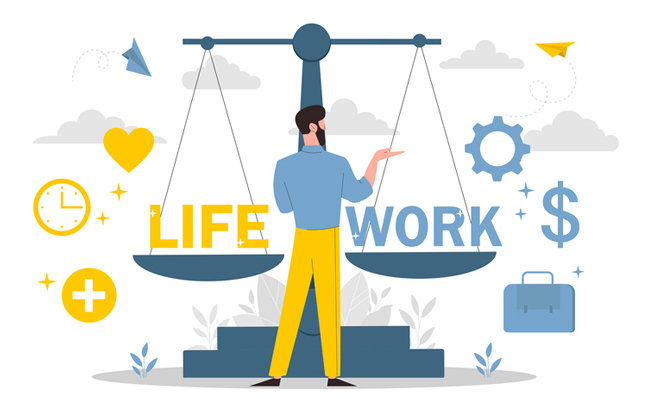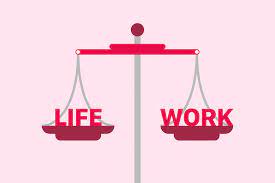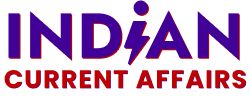In recent years, the concept of work-life balance has undergone a massive transformation. What was once seen as a luxury is now viewed as a necessity. By 2025, both in the United States and the United Kingdom, employees are no longer willing to sacrifice their personal lives, mental health, or family time for career growth. Instead, they are actively rethinking careers, workplace cultures, and lifestyle choices.
This shift is being shaped by remote work, AI adoption, flexible schedules, and the cultural aftermath of the pandemic, making work-life balance one of the top priorities in modern employment.
The Evolution of Work-Life Balance

Pre-Pandemic Era
Work-life balance was often considered a buzzword rather than a reality. Long commutes, rigid office hours, and limited flexibility defined professional life for most workers in the US and UK.
Post-Pandemic Shift (2020–2022)
The COVID-19 pandemic forced organizations to adopt remote and hybrid work models. Employees experienced flexibility for the first time and realized the value of time saved from commuting and the ability to integrate personal commitments into work schedules.
By 2025
- Remote work has become normalized.
- Four-day workweeks are being tested across industries in the UK and slowly entering the US.
- Mental health benefits and wellness programs are offered by top employers as part of standard HR policies.
Why Workers Are Rethinking Careers
1. Burnout and Mental Health Concerns
Reports show that nearly 60% of Gen Z and Millennials in the US and UK have considered leaving their jobs due to burnout. This generation prioritizes mental health and seeks employers who provide realistic workloads and support systems.
2. Demand for Flexibility
- Hybrid models allow workers to split time between home and office.
- Gig economy jobs and freelance careers are increasingly chosen for flexibility.
- Employees are rejecting rigid 9-to-5 models in favor of output-based performance evaluation.
3. AI and Automation Redefining Roles
With AI handling repetitive tasks, employees expect more creative, strategic, and meaningful work. Workers no longer want to “clock in and out”; they want career paths that feel purposeful.
4. Generational Values
- Gen Z demands transparency, inclusivity, and work that aligns with their values.
- Millennials prioritize family, travel, and personal development alongside work.
- Boomers and Gen X are increasingly considering phased retirements, part-time consulting, and passion projects.
Work-Life Balance Trends in the US (2025)
- Hybrid Work as a Norm – Most Fortune 500 companies have permanent hybrid policies.
- Wellness Stipends – Employers offer allowances for gym memberships, yoga, or therapy.
- Quiet Quitting → Career Shifting – Instead of silently disengaging, workers are openly switching to employers who value balance.
- Parental and Family Leave – Expanded policies are becoming standard, not optional.
Work-Life Balance Trends in the UK (2025)
- Four-Day Workweek Success – UK pilot programs show higher productivity and happier employees. More industries are adopting it.
- Flexible Employment Contracts – Shorter contracts, freelance gigs, and portfolio careers are gaining momentum.
- Focus on Wellbeing – UK companies integrate mental health first aiders, counseling, and meditation breaks.
- Workplace Equality – Equal opportunities for remote work across genders and age groups ensure inclusivity.
Employer Perspective – Why Work-Life Balance Matters
- Talent Retention – Companies offering flexibility have 25–30% higher retention rates.
- Productivity Gains – Employees with healthy balance report 40% higher productivity.
- Employer Branding – Work-life policies are now part of recruitment marketing strategies.
- Reduced Healthcare Costs – Better balance leads to fewer stress-related illnesses.
Challenges in Achieving Work-Life Balance
- Blurring Boundaries: Remote work often makes it hard to separate personal and professional time.
- Inequality in Flexibility: Blue-collar workers often miss out on benefits available to white-collar employees.
- Always-On Culture: Instant messaging and global connectivity create pressure to be available 24/7.
- AI Monitoring: While automation helps, some companies use AI for employee surveillance, causing stress.
Practical Steps Workers Are Taking in 2025
- Career Shifts – Moving from corporate roles to freelancing or entrepreneurship.
- Digital Detox – Setting boundaries by limiting after-hours work emails.
- Skill Diversification – Upskilling to move into roles with more flexibility.
- Relocation – Choosing smaller towns or remote-friendly cities for a slower lifestyle.
Future of Work-Life Balance – What’s Next?

Looking ahead, the concept of balance will continue to evolve:
- AI-powered personalized work schedules that adjust to individual productivity patterns.
- Expanded four-day workweeks across more industries.
- Holistic workplaces where wellness, career growth, and flexibility are built into company culture.
- Employee-driven work models where workers have greater say in when, where, and how they work.
Conclusion
By 2025, work-life balance is no longer an optional perk—it is a demand. Both in the US and the UK, employees are actively rethinking careers, shifting industries, and choosing employers who respect their time and values.
The next decade will see flexibility, wellness, and purpose-driven work as central to professional life. For employers, this means adapting to retain top talent. For employees, it means redefining success not just by paychecks, but by the quality of life they lead.
The future of work is not about working harder—it’s about working smarter, healthier, and happier.

